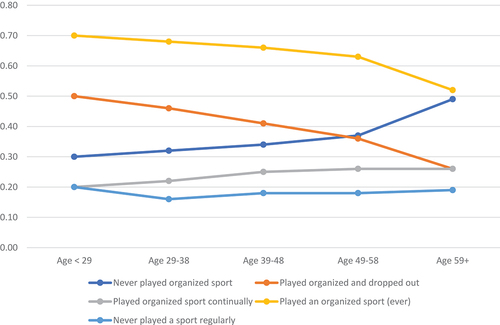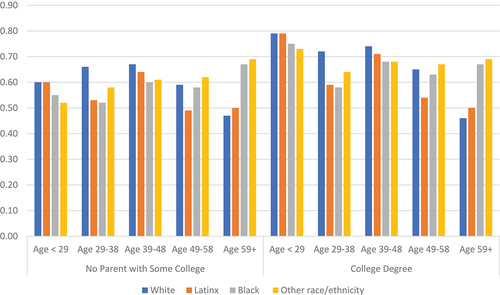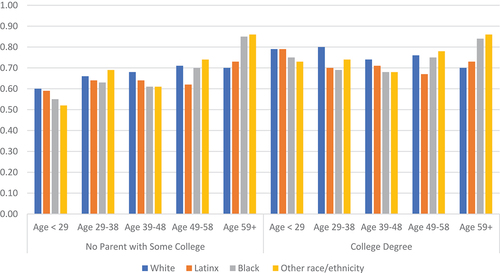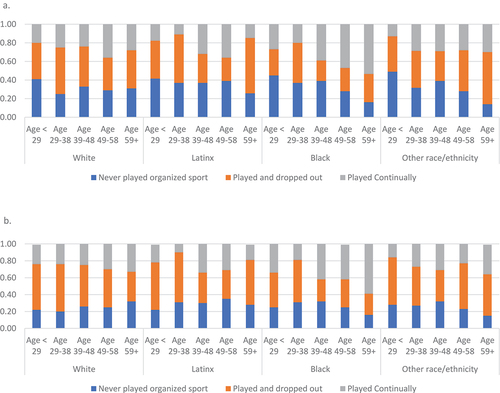Figures & data
Table 1. Descriptive statistics for all variables used in the analyses.
Figure 1. Initial predicted probabilities of different patterns of sport participation while growing up, across generations, after accounting for gender, race/ethnicity, and socioeconomic status differences.

Table 2. Results from Logistic Regressions of Never Playing a Sport Regularly, While Growing Up.
Table 3. Marginal Effects for Never Playing a Sport Regularly, While Growing Up.
Table 4. Results from Logistic Regressions of Playing an Organized Sport, While Growing Up.
Table 5. Marginal Effects for Playing an Organized Sport, While Growing Up.
Table 6. Results from Multinomial Logistic Regressions that Include Findings for Never Playing an Organized Sport versus Playing an Organized Sport Continually, While Growing Up.
Table 7. Results from Multinomial Logistic Regressions that Include Findings from Playing an Organized Sport and Dropping Out versus Playing an Organized Sport Continually, While Growing Up.
Table 8. Marginal Effects for the Predicted Probabilities of Never Playing an Organized Sport, Playing an Organized Sport and Dropping Out, and Playing an Organized Sport Continually, While Growing Up.
Figure 2. Predicted probabilities of having played an organized sport for females based on generational, racial/ethnic, and parents’ highest educational attainment contexts and interaction effects.

Figure 3. Predicted probabilities of having played an organized sport for those who did not identify as female based on generational, racial/ethnic, and parents’ highest educational attainment contexts and interaction effects.

Figure 4. (a) Predicted probabilities of never playing an organized sport, playing and dropping out, and playing continually among females with no parent with some college. (b) Predicted probabilities of never playing an organized sport, playing and dropping out, and playing continually among females with a parent with a college degree.

Figure 5 a. Predicted probabilities of never playing an organized sport, playing and dropping out, and playing continually among those who did not identify as female and had no parent with some college. b. Predicted probabilities of never playing an organized sport, playing and dropping out, and playing continually among those who did not identify as female and had a parent with a college degree.

Table A1. Correlations between Variables Used in the Analyses.
Table A2. Questions from the National Sports and Society Survey used to Create Study Variables.
